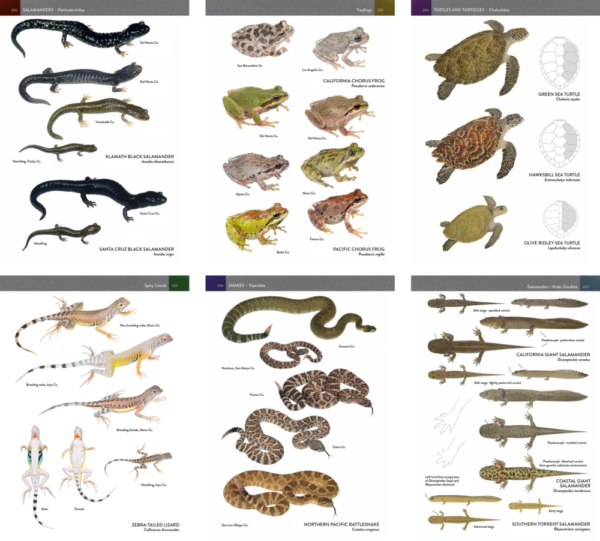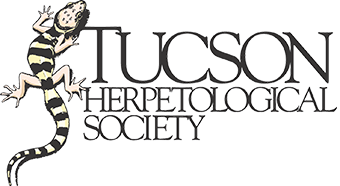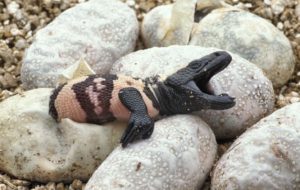
A New Herpetological Field Guide for California
Robert Hansen
Affiliated Researcher, Museum of Vertebrate Zoology,
University of California, Berkeley
Venue information below
California is home to ca. 209 species of amphibians and reptiles, including approximately 32 exotics, a few of which are invasive. Covering 425,000 hectares, spanning 9.5 degrees of both latitude and longitude, and containing the lowest and highest elevations in the continental U.S., such diversity is not unexpected. New discoveries in recent years, whether in the lab or field, have resulted in the recognition of many new species and point to the need for an updated, accurate, and comprehensive guide to the California herpetofauna. We began this project in January 2021 and turned in a final manuscript to the publisher in December 2023. The book contains 122 range maps, 165 color plates showcasing 943 photos of live specimens, 144 original color paintings of larval amphibians and sea turtles, and 51 line drawings. Importantly, this project involved >200 collaborators representing the gamut of California’s herpetological community, from enthusiastic amateurs to professional herpetologists.
 Robert Hansen was the Editor of Herpetological Review from 1991 to 2021, a 30-year tenure. He received the Presidential Award for Lifetime Achievement in Herpetology from the Society for the Study of Amphibians and Reptiles in 2015. In 2023, he was the recipient of the Alison Haskell Award for Excellence in Herpetofaunal Conservation from Partners in Amphibian & Reptile Conservation. His research interests include systematics of plethodontid salamanders in California and kingsnakes in Mexico. He also leads a long-running study of a snake community in the Mojave Desert, now its 46th year. Currently he is an Affiliated Researcher with the Museum of Vertebrate Zoology at UC Berkeley. With his colleague Jackson Shedd, he is the author of the recently published Princeton Field Guide to California Amphibians and Reptiles.
Robert Hansen was the Editor of Herpetological Review from 1991 to 2021, a 30-year tenure. He received the Presidential Award for Lifetime Achievement in Herpetology from the Society for the Study of Amphibians and Reptiles in 2015. In 2023, he was the recipient of the Alison Haskell Award for Excellence in Herpetofaunal Conservation from Partners in Amphibian & Reptile Conservation. His research interests include systematics of plethodontid salamanders in California and kingsnakes in Mexico. He also leads a long-running study of a snake community in the Mojave Desert, now its 46th year. Currently he is an Affiliated Researcher with the Museum of Vertebrate Zoology at UC Berkeley. With his colleague Jackson Shedd, he is the author of the recently published Princeton Field Guide to California Amphibians and Reptiles.





